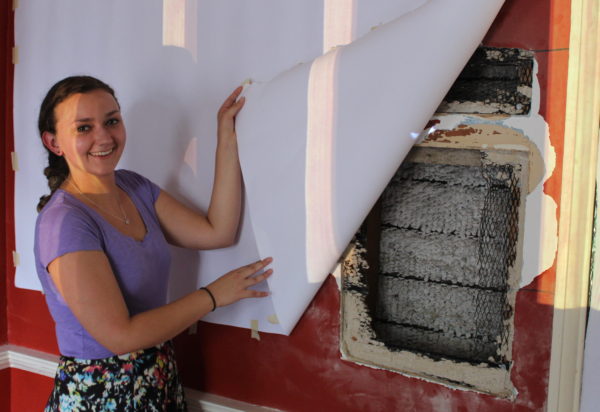
It turns out that if you knock a hole in a wall, you can learn a lot about a building’s history. Well, we did that—punched a big ol’ square right in the middle of a bright red wall in the dining room of the Robert Carter House.
This apparent act of architectural violence was in the service of learning more about how the wall was constructed and altered through the 18th century. And the immediate payoff is in the form of an impressive animation project by a visiting research fellow, Sierra Dorschutz.
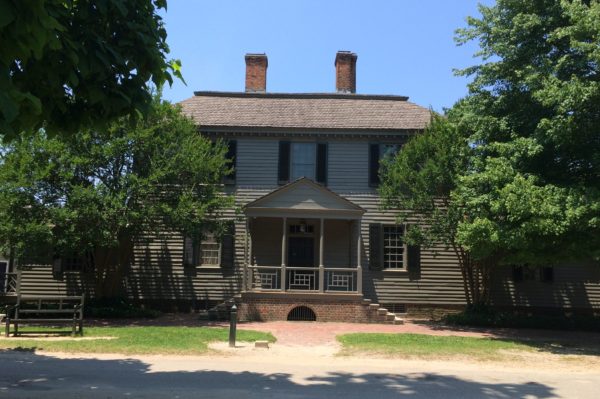
The Carter House has been at the focus of a sustained investigation by our architectural historians. The Building Detectives program allowed the public to help, but there was also a photographic project by another visiting fellow and an architectural field school hard at work this summer.
Sierra’s contribution was to bring the history of one wall to life. And it offers the promise of visualizing historical spaces in new ways. After all, using animation to illustrate the different stages in a structure’s history beats ripping holes in walls all over the place.
“I think the project will give people a better sense of what 3D can do in the world,” explained Sierra. “A lot of people see 3D work or animation as something only movies do, or even a medium that is just reserved for kids or entertainment, but there are plenty more applications of it that can we can benefit from.”
Peter Inker, our Director of Interpretive Program Development, sees this project as a promising first step towards combining augmented reality (probably in the form of apps) into the guest experience. “My goal,” he said, “is to be able to provide as many different avenues of interaction for the guest as we can, so they can curate their own visit, and interact in the way they want to.”
Sierra is a recent graduate of the Film and Animation program at the Rochester Institute of Technology. As an undergraduate, she paired her interest in 3D animation with an Archaeology minor. Working with the Rochester Museum and Science Center, she made 3D digital reconstructions of a late archaic period Native American site.
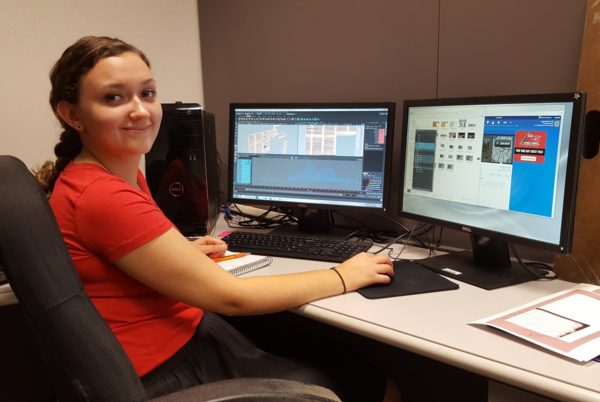
Colonial Williamsburg wasn’t really on her radar, but during a family trip to Drayton Hall Plantation outside Charleston a few years ago, she was fascinated by a display of still frame renders that happened to have been made by someone who honed her skills working with Cindy Decker, our Digital Visualizer, who has been instrumental in creating digital representations like Virtual Williamsburg.
This led to Sierra coming to town for a brief volunteer stint in 2014, when she shadowed Cindy, who was rendering baskets for the digital version of the Market House.
This year, hoping to further hone her skills, Sierra applied for the 3D Visualization Fellowship. When she arrived in June she wasn’t sure exactly what kind of project she might pursue. That isn’t too unusual for digital history fellows who, unlike our Rockefeller research fellows, have Colonial Williamsburg as a laboratory for their skills more than a place to do primary source research.
What Sierra did know was that she wanted to work on something that would have some lasting usefulness to the Foundation. Peter Inker steered Sierra toward work on the Carter House. Our architectural historians were enthusiastic about the prospect of showing how cool sticks and plaster could be when brought to life. The dining room wall was chosen because it had lots of interesting physical evidence, from ghost marks to the framing strips revealed in a 1930s photograph of the space.
From her perch at Bruton Heights School, where many of our researchers ply their trades, Sierra got to work. But she couldn’t just dive in and start animating. The first step after choosing the wall was to make a precisely measured Auto CAD drawing of the wall. Which meant learning how to use Auto CAD.
It also demanded coordinating the knowledge of many experts—including our architectural historians and curators who helped to figure out what the plaster should look like and how it would be applied; the lath pattern; the right paint color and wallpaper patterns; and much more. Every step was based on historical or physical evidence.
Crafting the 3D animation was a process of trial and error as she tried to find just the right way to represent construction. In fact, the first version she unveiled ran backwards in time, showing how peeling back layers of building materials ultimately revealed the wall’s origins.
Regular feedback refined all the elements of the presentation. What kind of tool would be used to spread plaster? What would the scratch marks look like? How should the wallpaper be hung?
“When I came here I didn’t know how a wall was put together,” said Sierra. “I can see how someone going into the Building Detectives program would have a hard time understanding how all this construction worked.”
The animation is a useful tool for helping guests understand all these architectural details. “You hear all this history being thrown at you, but it can be hard to visualize.”
But visualization is exactly the purpose of Sierra’s animation. Last week, as she wrapped up her fellowship, Sierra projected the animation directly onto the wall whose history was being deconstructed. In a five-by-eight foot space overlaying much of the wall and door, it was possible to see the change over time in the actual space where it took place.
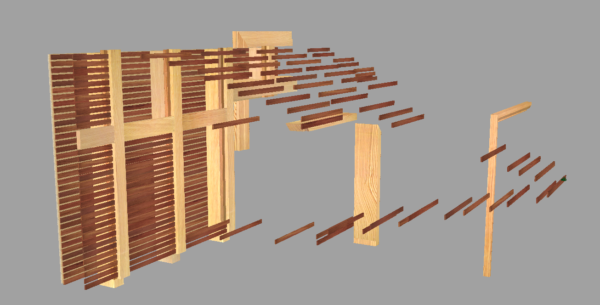
Since it’s “just” a wall, the animation doesn’t necessarily look like what we imagine as 3D. But it is. Every individual frame has depth, even if it isn’t visible in the animation. But a cross-section of a frame shows some of the complexity. There is a “camera” which provides the viewer’s perspective in the animation, but not all the information is visible. For example, Sierra explained she had to make the pieces of lath fly into view in a particular way so they wouldn’t be within view until it was time for them to be mounted on the wall.
Making the hole in the wall added a lot of information to what was known already about the space. The initial building phase begun by Robert “King” Carter in 1726 was followed by a second phase of construction in 1762.
“In the wall, you could see the ghost marks,” said Sierra, “but we didn’t even know how the nailers were put into the wall.” In order to show the prep work for the 1762 remodeling, Sierra had to show the removal of paint and plaster, which added steps—and a little bit of action—to the animation. You can see the plaster cracking, then exploding from the wall.
Below is a shortened version of Sierra’s animation project. Keep in mind that this is considerably sped up, so some of the subtlety and detail is lost. Also, this was meant to be viewed as a projection on the Carter House wall.
Inker has big plans for work like this. “I would next like to have a Fellow who can take the animation and connect it to body recognition cameras, that will enable the guest to use gestures-painting, sweeping plaster, lifting frames-to reconstruct the wall virtually in the actual space, in real time. A projector will show the animation of the phases the construction the guest is working on. So ultimately, a guest could be their own detective, deconstructing and constructing the wall at will.”
“I’m hoping that this spreads awareness that art, technology, and history can blend together, instead of being these stand-alone fields,” said Sierra. “Some people might fear that the integration of technology with history alters how we perceive it, but I feel it is the opposite.” This is a way to enhance the historical experience that visitors look forward to at Colonial Williamsburg.”
While making as few holes as possible.
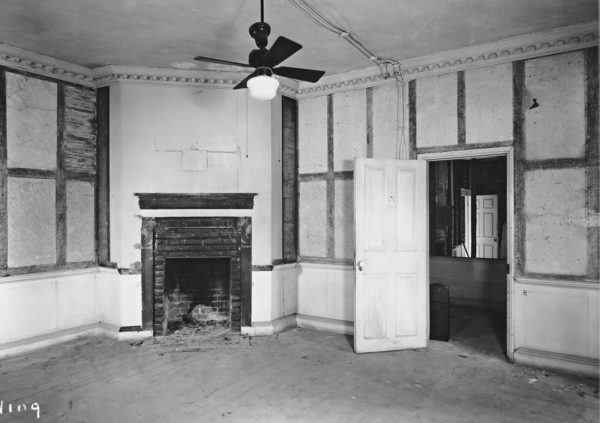
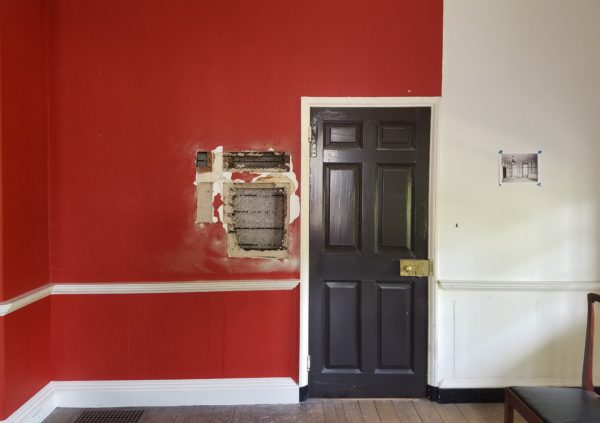
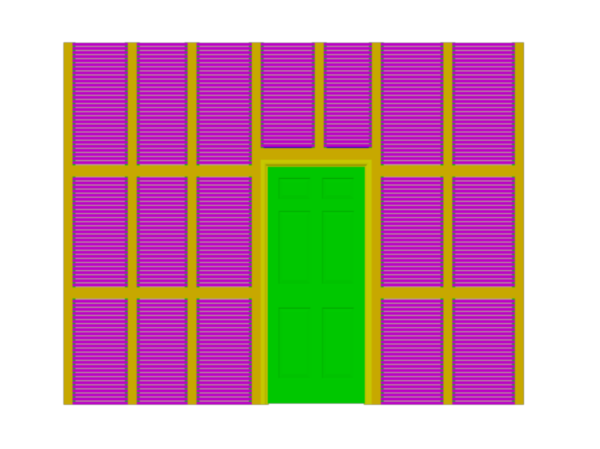
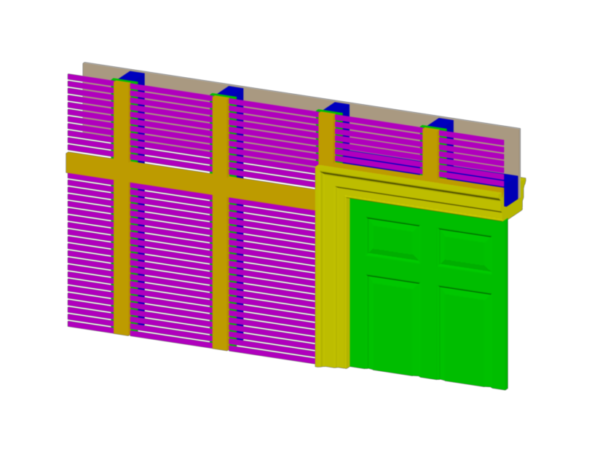

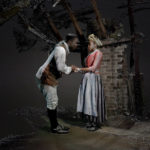
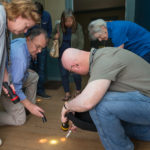
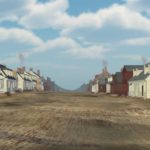
I enjoy the Carter House. A few months back I was the first group invied to examine the interior of the house by an archeologist. They had cameras there to interview people. They said they would email us and would be an exclusive group to study the house. Wasn’t caloed back and that was last May.
I would still be interested to go with the group.
Also, I volunteered to do guided tours in CW namely artifacts. I went to the office in early June. The person said she did not have any tours available but would pass my name around to groups. It is difficult for me to believe that they are full in all voluntary departments. I so am interested in the legacy of CW but they don’t appear to keep me abreast except through Makng History.
I have also had difficulty with the Calendar of events and wish to know what I can do on my iPad to help with your site. I have not received any response..
How amazing is this?! Thank you for sharing this remarkable project with us. CW - always on the cutting edge!